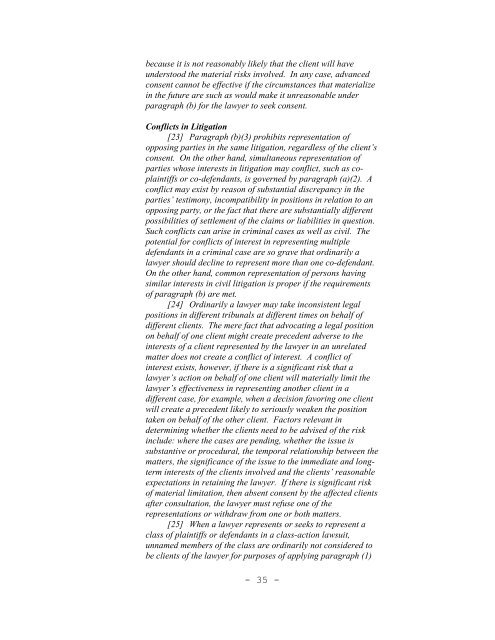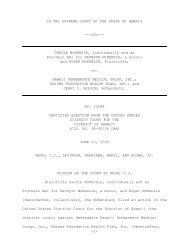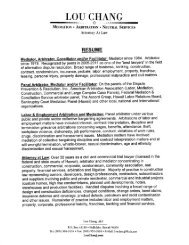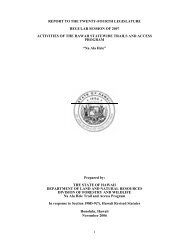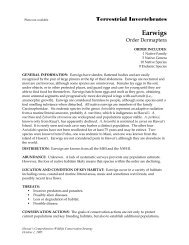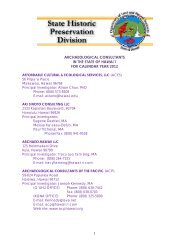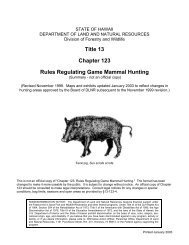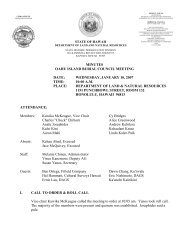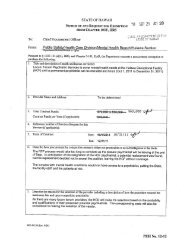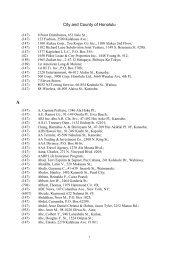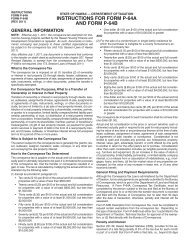amendments to the Hawaii Rules of Professional Conduct
amendments to the Hawaii Rules of Professional Conduct
amendments to the Hawaii Rules of Professional Conduct
You also want an ePaper? Increase the reach of your titles
YUMPU automatically turns print PDFs into web optimized ePapers that Google loves.
ecause it is not reasonably likely that <strong>the</strong> client will have<br />
unders<strong>to</strong>od <strong>the</strong> material risks involved. In any case, advanced<br />
consent cannot be effective if <strong>the</strong> circumstances that materialize<br />
in <strong>the</strong> future are such as would make it unreasonable under<br />
paragraph (b) for <strong>the</strong> lawyer <strong>to</strong> seek consent.<br />
Conflicts in Litigation<br />
[23] Paragraph (b)(3) prohibits representation <strong>of</strong><br />
opposing parties in <strong>the</strong> same litigation, regardless <strong>of</strong> <strong>the</strong> client’s<br />
consent. On <strong>the</strong> o<strong>the</strong>r hand, simultaneous representation <strong>of</strong><br />
parties whose interests in litigation may conflict, such as coplaintiffs<br />
or co-defendants, is governed by paragraph (a)(2). A<br />
conflict may exist by reason <strong>of</strong> substantial discrepancy in <strong>the</strong><br />
parties’ testimony, incompatibility in positions in relation <strong>to</strong> an<br />
opposing party, or <strong>the</strong> fact that <strong>the</strong>re are substantially different<br />
possibilities <strong>of</strong> settlement <strong>of</strong> <strong>the</strong> claims or liabilities in question.<br />
Such conflicts can arise in criminal cases as well as civil. The<br />
potential for conflicts <strong>of</strong> interest in representing multiple<br />
defendants in a criminal case are so grave that ordinarily a<br />
lawyer should decline <strong>to</strong> represent more than one co-defendant.<br />
On <strong>the</strong> o<strong>the</strong>r hand, common representation <strong>of</strong> persons having<br />
similar interests in civil litigation is proper if <strong>the</strong> requirements<br />
<strong>of</strong> paragraph (b) are met.<br />
[24] Ordinarily a lawyer may take inconsistent legal<br />
positions in different tribunals at different times on behalf <strong>of</strong><br />
different clients. The mere fact that advocating a legal position<br />
on behalf <strong>of</strong> one client might create precedent adverse <strong>to</strong> <strong>the</strong><br />
interests <strong>of</strong> a client represented by <strong>the</strong> lawyer in an unrelated<br />
matter does not create a conflict <strong>of</strong> interest. A conflict <strong>of</strong><br />
interest exists, however, if <strong>the</strong>re is a significant risk that a<br />
lawyer’s action on behalf <strong>of</strong> one client will materially limit <strong>the</strong><br />
lawyer’s effectiveness in representing ano<strong>the</strong>r client in a<br />
different case, for example, when a decision favoring one client<br />
will create a precedent likely <strong>to</strong> seriously weaken <strong>the</strong> position<br />
taken on behalf <strong>of</strong> <strong>the</strong> o<strong>the</strong>r client. Fac<strong>to</strong>rs relevant in<br />
determining whe<strong>the</strong>r <strong>the</strong> clients need <strong>to</strong> be advised <strong>of</strong> <strong>the</strong> risk<br />
include: where <strong>the</strong> cases are pending, whe<strong>the</strong>r <strong>the</strong> issue is<br />
substantive or procedural, <strong>the</strong> temporal relationship between <strong>the</strong><br />
matters, <strong>the</strong> significance <strong>of</strong> <strong>the</strong> issue <strong>to</strong> <strong>the</strong> immediate and longterm<br />
interests <strong>of</strong> <strong>the</strong> clients involved and <strong>the</strong> clients’ reasonable<br />
expectations in retaining <strong>the</strong> lawyer. If <strong>the</strong>re is significant risk<br />
<strong>of</strong> material limitation, <strong>the</strong>n absent consent by <strong>the</strong> affected clients<br />
after consultation, <strong>the</strong> lawyer must refuse one <strong>of</strong> <strong>the</strong><br />
representations or withdraw from one or both matters.<br />
[25] When a lawyer represents or seeks <strong>to</strong> represent a<br />
class <strong>of</strong> plaintiffs or defendants in a class-action lawsuit,<br />
unnamed members <strong>of</strong> <strong>the</strong> class are ordinarily not considered <strong>to</strong><br />
be clients <strong>of</strong> <strong>the</strong> lawyer for purposes <strong>of</strong> applying paragraph (1)<br />
- 35


